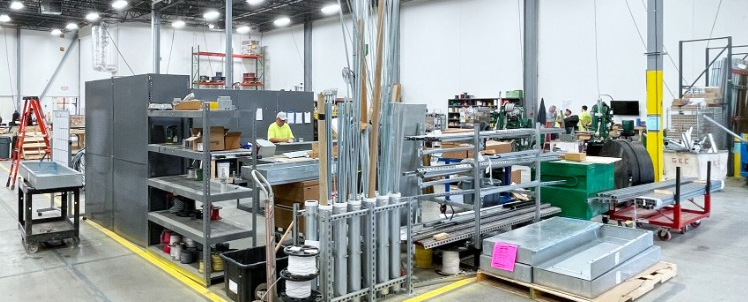Prefabrication has become a popular trend in the construction industry, offering a more efficient, cost-effective, and safer way of building. This approach involves assembling components off-site in a controlled environment and transporting them to the job site where and when they are needed. In electrical construction, prefabrication involves the use of building information modeling (BIM) to identify opportunities for the assembly of electrical components to be done off-site. This process is known as electrical prefab and has many benefits for customers, including improved quality control, reduced waste, and protected project timelines.
Better Coordination Between Trades
One of the primary benefits of prefabrication in electrical construction is better coordination between trades on the job site. Through the use of BIM technology and virtual design and construction (VDC) services, plans for all trades can be layered to create a 3D virtual image of a project. This enables project managers and contractors to identify overlaps and issues before any work gets underway, ensuring that each trade can work efficiently and effectively without causing delays or issues for others.
Safer and Leaner Job Sites
Prefabrication can also help create safer and leaner job sites. When prefab construction is part of a project plan, job sites are less congested with simultaneous work. This lean approach reduces the risk of accidents and injuries, making job sites safer for workers. Additionally, with less congestion, it is easier to move materials and equipment around the site, improving overall efficiency.
Improved and Standardized Quality of Assemblies
Prefabrication also results in improved and standardized quality of assemblies. Assemblies of all sizes and complexity, as well as those created in coordination with other trades, are crafted in the controlled environment of a prefabrication facility. This ensures that electricians can create assemblies without the stress of weather-related issues or job site congestion, resulting in higher quality products that meet or exceed industry standards.
Reduction of Environmental Impact
Prefabrication can also help reduce the environmental impact of construction. Waste from prefabrication can be reduced and recycled more easily in an off-site setting. By using fewer materials and creating less waste, prefabrication helps to reduce the carbon footprint of construction projects.
Protected Project Timelines
With electrical prefabrication, timelines are more efficient, more consistent, and more reliable than traditional builds. Work is completed off-site in a dedicated facility, reducing the risk of overlap, congestion, or weather-related issues. This makes timelines more predictable and protected from significant delays, enabling projects to be completed on time and within budget.
Design and Preconstruction Phase
During the design and preconstruction phase, Virtual Design and Construction techniques and BIM technology help uncover unique prefabrication opportunities. All aspects of the construction are considered, from job needs to site space, logistics, design, trade overlap, and much more. By identifying these opportunities early on, we can create a more efficient and effective project plan.
Design Review
All layers of the project are visible virtually using advanced BIM technology, making the design review and project timelines easy to see and discuss. This enables our team to identify any issues or potential problems before construction begins, reducing the risk of delays or cost overruns.
Installation Planning
The same process that uncovers prefabrication opportunities informs the installation planning process. This information allows project managers and foremen to breakdown and schedule tactical work with precision. By planning ahead and identifying potential issues, we can prevent problems with installation, manpower, and electrical designs.
Prefabrication Assembly
Every piece of the project is assembled in a controlled environment, ensuring quality. Costs and timelines are controlled, and waste and recycling are easier to manage. Job sites remain lean and efficient, with less clutter and congestion.
Delivery
Once the assemblies are complete, they are packaged and labeled in the manufacturing facility and delivered on-demand, directly to the installation point. This ensures that the assemblies are delivered exactly where and when they are needed, reducing the risk of delays or issues with installation.
Installation Monitoring
Installation of assemblies is done efficiently with great standardization, resulting in a repeatable quality product. The installation process and general job site productivity are measured, and adjustments are made in real-time through agile construction project management efforts. This ensures that the project stays on track and within budget, with minimal delays or issues.
In summary, prefabrication in electrical construction offers many benefits for customers, including improved quality control, reduced waste, and protected project timelines. By using BIM technology and VDC services, project managers and contractors can coordinate work more efficiently, resulting in safer and leaner job sites. Prefabrication also results in improved and standardized quality of assemblies and a reduced environmental impact. The prefabrication process involves several steps, including design and preconstruction, design review, installation planning, prefabrication assembly, delivery, and installation monitoring. By working with experienced electrical contractors who specialize in prefabrication, customers can ensure that their projects are completed on time, within budget, and to the highest standards of quality.


